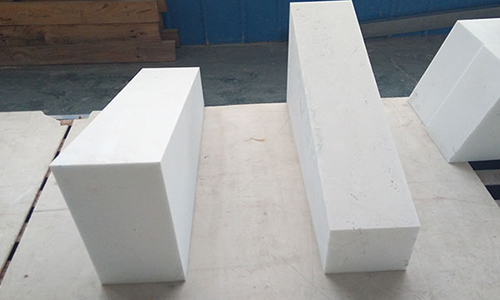The production method of using traditional foam method to make anorthite insulation bricks: using kyanite as the main raw material and white cement as the binder to develop anorthite combined with mullite lightweight insulation refractory bricks.

Anorthite and mullite thermal insulation material is a composite material with mullite as the main crystal phase and anorthite as the binding phase. The melting point of anorthite is only 1550℃, but it has the characteristics of small thermal expansion coefficient and low thermal conductivity. Therefore, the anorthite and mullite heat insulation refractory material composite can not only have the advantages of low thermal conductivity of anorthite, but also have the characteristics of high use temperature of mullite products, and also have a lower sintering temperature. , Higher strength and better thermal shock stability.
Anorthite molecular formula: CaO ·Al2O3· 2SiCO2, containing 20.2% CaCO2, 36.6% Al2O3, 43.3% SiO2, melting point 1552℃. Anorthite is usually not regarded as a refractory mineral phase, but when it is used as the main component and the matrix phase in the lightweight heat insulation material, it can make the heat insulation refractory material have good thermal insulation performance, high peeling resistance and reduction Excellent characteristics such as high stability in the atmosphere. Anorthite lightweight bricks have two types of products, anorthite as the main component and anorthite as the matrix binding phase. Lightweight bricks with anorthite as the main component are made of raw materials such as kaolinite, clay clinker, pyrophyllite and gypsum, added with combustibles or foaming materials, molded by slurry casting or extrusion, and dried and Manufactured by firing. Lightweight bricks combined with anorthite are typically anorthite.
Combined with lightweight mullite bricks. It can be made by using kyanite as the source of introducing AL2O3 and SIO2, and white cement as the raw material for introducing CAO, adding a foaming agent, such as rosin soap, through mixing, pouring, and firing at 1400°C. Kyanite is converted into mullite in large quantities at 1200-1300°C, and at the same time it reacts with white cement to form anorthite, accompanied by large volume expansion, which can compensate for the large shrinkage produced during the sintering of the bricks. Anorthite combined with lightweight mullite bricks have the excellent properties of anorthite and mullite.
The anorthite lightweight insulation bricks have small bulk density, low thermal conductivity, good thermal shock resistance and strong resistance to reducing atmospheres. The use temperature is 1100 ~ 1300 ℃. Anorthite is combined with lightweight mullite bricks. The use temperature can reach above 1400℃. Anorthite lightweight insulation bricks have a wide range of uses. They are used in the iron and steel industry as heat insulation linings for hot blast stoves, soaking furnaces, heating furnaces, etc., and as heat insulation linings for various catalytic cracking furnaces in the petroleum industry.


